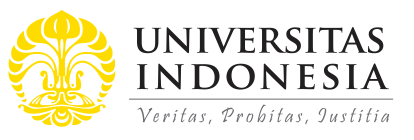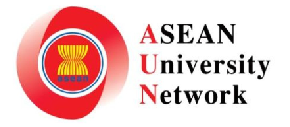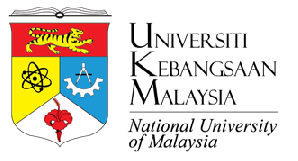
Abstract
This paper examines the credibility of source persons for community service projects in improving financial literacy for vocational school students in Indonesia. Improving financial literacy among Indonesian youth is a long-term effort that requires multi- collaboration between the government, financial institutions, educational institutions, NGOs, and other stakeholders. Despite its substandard position to Singapore, Myanmar, and Malaysia, Indonesia’s financial literacy proficiency has improved significantly—one of which—after being catalyzed by the government’s cooperation with higher education institutions through community service programs. However, amid these improvements, greater attention must be given to capital markets, whose literacy level is most deficient compared to the banking, insurance, financing, pension fund, and financial technology sectors. By referring to the source credibility theory and PROSEM (problem rooting, solution treatments, and measurement) procedures, this study aims to improve vocational school students’ capital market literacy and determine the better expert (academician versus regulator experts) in providing basic capital market training to Indonesian vocational school students. Using 118 trainees, 59 each in classrooms trained by an academic and a capital market regulator separately, descriptive analysis along with ANOVA, paired- sample test, and independent samples test was used to observe the pre-and post-test of capital market literacy training. The results demonstrate significant improvement in students’ capital market literacy after the training. This study has demonstrated that credible trainers, especially those perceived as experts, are more effective as financial literacy sources for the trainees in capital market basic training. It provides a better guide for similar community services regarding selecting credible trainers or source persons.
References
Aisa, N. N. M. (2022). Do financial literacy and technology affect intention to invest in the capital market in the early pandemic period? Journal of Accounting and Investment, 23(1), 49–65. https://journal.umy.ac.id/index.php/ai/article/view/12517
Asepta, U. Y., Wijayanti, D., & Manalu, S. (2022). Pengenalan pasar modal sebagai stimulus investasi bagi siswa Sekolah Menengah Atas. Prosiding Seminar Nasional Pengabdian Masyarakat Universitas Ma Chung 2022,114–120.
Baihaqqy, M. R. I., Disman, Nugraha, & Sari, M. (2020). The correlation between education level and understanding of financial literacy and its effect on investment decisions in capital markets. Journal of Education and e-Learning Research, 7(3), 303–313. https://doi.org/10.20448/journal.509.2020.73.306.313
Becker, A., Waldner, C. J., Nitsch, L. J., & Trautwein, S. (2023). Communicating social value: An experimental study on credible communication and social enterprises. Nonprofit Management & Leadership, 33(3), 511–533. https://doi.org/10.1002/nml.21529
Creon, L. E., & Schermuly, C. C. (2022). A new path to training transfer: Transformational trainers and psychologically empowered training participants. International Journal of Training and Development, 26(2), 228–244. https://doi.org/10.1111/ijtd.12256
Fabozzi, F. J., & Drake, P. P. (2009). Finance: Capital markets, financial, and investment management. Wiley.
Fabris, N., & Luburić, R. (2016). Financial education of children and youth. Journal of Central Banking Theory and Practice, 5(2), 65–79. https://doi.org/10.1515/jcbtp-2016-0011
Fakhruddin, I., Oktaviani, S. D., Khotijah, S., Safrina, E., Tasaniah, R., & Syahda, F. (2023). Sosialisasi dan edukasi publik pasar modal di SMA Negeri 4 Bengkalis Riau. Jurnal Inovasi Pengabdian dan Pemberdayaan Masyarakat, 3(1), 369-374. https://doi.org/10.54082/jippm.86
Frisancho, V. (2020). The impact of financial education for youth. Economics of Education Review, 78, Article 101918. https://doi.org/10.1016/j.econedurev.2019.101918
Hati, S. R. H., & Wibowo, S. S. (2017). Exploring the motivation toward and perceived usefulness of a financial education: Program offered to low-income women in Indonesia. ASEAN Journal of Community Engagement, 1(1), 17–28. https://doi.org/10.7454/ajce.v1i1.57
Holladay, C. L., & Quiñones, M. A. (2008). The influence of training focus and trainer characteristics on diversity training effectiveness. Academy of Management Learning & Education, 7(3), 343–354. https://doi.org/10.5465/amle.2008.34251672
Hovland, C. I., & Weiss, W. (1951). The influence of source credibility on communication effectiveness. Public Opinion Quarterly, 15(4), 635–650. https://doi.org/10.1086/266350
HS, S. R., & Indriayu, M. (2017). Kajian literasi keuangan pada siswa menengah atas (SMA): Sebuah pemikiran. Prosiding Seminar Pendidikan Ekonomi Dan Bisnis, 3(1), 1–9. https://jurnal.fkip.uns.ac.id/index.php/snpe/article/view/10712
Klapper, L., Lusardi, A., & van Oudheusden, P. (2020). Financial literacy around the world: Insights from the Standard & Poor’s Ratings Services Global Financial Literacy Survey. https://gflec.org/wp-content/uploads/2015/11/3313-Finlit_ Report_FINAL-5.11.16.pdf?x94867
Lachner, A., Jarodzka, H., & Nückles, M. (2016). What makes an expert teacher? Investigating teachers’ professional vision and discourse abilities. Instructional Science, 44, 197–203. https://doi.org/10.1007/s11251-016-9376-y
Lusardi, A. (2019). Financial literacy and the need for financial education: Evidence and implications. Swiss Journal of Economics and Statistics, 155(1). https://doi.org/10.1186/s41937-019-0027-5
Messy, F. A., & Monticone, C. (2016). Financial education policies in Asia and the Pacific. OECD Working Papers on Finance, Insurance, and Private Pensions, No.40. OECD Publishing. https://doi.org/10.1787/5jm5b32v5vvc-en
Oktaviyanthi, R., Husain, M. K., & Suryaman, S. (2019). Saponify handmade soap: Ekonomi kreatif pendukung literasi finansial siswa SMK. Jurnal KUAT: Keuangan Umum dan Akuntansi Terapan, 1(2), 76–81. https://doi.org/10.31092/kuat.v1i2.466
Organization for Economic Cooperation and Development (OECD). (2013). PISA 2012 assessment and analytical framework: Mathematics, reading, science, problem solving and financial literacy. PISA, OECD Publishing. http://dx.doi.org/10.1787/9789264190511-en
Organization for Economic Cooperation and Development (OECD). (2017). PISA results 2015 (Volume IV): Students’ financial literacy. PISA, OECD Publishing. https://doi.org/10.1787/9789264270282-en
Organization for Economic Cooperation and Development (OECD). (2018). PISA 2018 results: Are students smart about money? PISA, OECD Publishing. https://doi.org/10.1787/48ebd1ba-en
Otoritas Jasa Keuangan (OJK). (November 24, 2022). Hasil survey nasional literasi dan inklusi keuangan tahun 2022. https://ojk.go.id/id/berita-dan-kegiatan/info-terkini/Pages/Infografis-Survei-Nasional-Literasi-dan-Inklusi-Keuangan-Tahun-2022.aspx
Pangestu, S., & Karnadi, E. B. (2020). The effects of financial literacy and materialism on the savings decision of generation Z Indonesians. Cogent Business & Management, 7(1), Article 1743618. https://doi.org/10.1080/23311975.2020.1743618
Panos, G. A., & Wilson, J. O. (2020). Financial literacy and responsible finance in the FinTech era: Capabilities and challenges. The European Journal of Finance, 26(4– 5), 297–301. https://doi.org/10.1080/1351847X.2020.1717569
Peters, B. G. (2015). Policy capacity in public administration. Policy and Society, 34(3– 4), pp. 219–228. https://doi.org/10.1016/j.polsoc.2015.09.005
Prasandha, D., & Susanti, Y. D. (2022). Empowering rural entrepreneurs through the independent-entrepreneurship literacy program. ASEAN Journal of Community Engagement, 6(1), 48–75. https://doi.org/10.7454/ajce.v6i1.1176
Samosir, M. S. (2022). Return dan risk. In Suwandi (Ed.), Pengetahuan Dasar Pasar Modal dan Investasi (pp.120–126). Eureka Media Aksara.
Serman, Z. E., & Sims, J. (2022). Source credibility theory: SME hospitality sector blog posting during the COVID-19 pandemic. Information Systems Frontiers, 2317– 2334. https://doi.org/10.1007/s10796-022-10349-3
Suci, A., & Hardi, H. (2020). Literacy experiment of Islamic financing to non-muslim small and micro businesses. Journal of Islamic Marketing, 11(1), 179–191. https://doi.org/10.1108/JIMA-01-2019-0003
Suci, A., Maryanti, S., Hardi, H., & Sudiar, N. (2022). Embedding design thinking paradigm in a university’s business assistance to small business. Systemic Practice and Action Research, 35, 177–201. https://doi.org/10.1007/s11213-021-09565-w
Suci, A., & Van F. C., L. L. (2023). Riset eksperimen ilmu bisnis dan manajemen. LPPM Unilak Press.
Tualeka, O. N. A., Lekatompessy, A. T., Ambo, A. F. S., Umasangaji, S., & Hukubun, R. D. (2022). Edukasi dan pelatihan investasi pasar modal Indonesia terhadap siswa SMA Negeri 6 Ambon. ABDIKAN: Jurnal Pengabdian Masyarakat Bidang Sains dan Teknologi, 1(2), 277–282. https://doi.org/10.55123/abdikan.v1i2.337
Van Rooij, M., Lusardi, A., & Alessie, R. (2011). Financial literacy and stock market participation. Journal of Financial Economics, 101(2), 449–472. https://doi.org/10.1016/j.jfineco.2011.03.006
Xia, T., Wang, Z., & Li, K. (2014). Financial literacy overconfidence and stock market participation. Social Indicators Research, 119, 1233–1245. https://doi.org/10.1007/s11205-013-0555-9
Xiao, M., Wang, R., & Chan-Olmsted, S. (2018). Factors affecting YouTube influencer marketing credibility: A heuristic-systematic model. Journal of Media Business Studies, 15(3), 188–213. https://doi.org/10.1080/16522354.2018.1501146
Recommended Citation
Salmiah, Neneng; Suci, Afred; and Wiyati, Rita
(2023).
Source Credibility in the Community Service of Financial Literacy for Indonesian Vocational School Students.
ASEAN Journal of Community Engagement, 7(2), 165-178.
Available at: https://doi.org/10.7454/ajce.v7i2.1230
Included in
Accounting Commons, Business Administration, Management, and Operations Commons, Finance and Financial Management Commons







